In the late 1990’s Nikon launched 2 new SLR cameras that they thought would be game changers. These were serious kit and offer incredible back and forward lens compatility and can still use Nikon lenses made today and from the 1970’s . But you’ll never find either of these Pronea models on a top 10 Nikon cameras list
That’s because they shoot APS film.
Advanced Photo Sytem (APS)
Introduced in 1996, APS was a film format created by some of the big camera and film manufacturers. If you want to take a benevolent view – they wanted to give consumers a modern, compact, easy to use film with pop in loading and no messy negatives to deal with. With some cameras the film could switch be swapped out mid roll and store EXIF like data.
Now the cynic in you will see big photo money’s attempt at foisting a new format on an unsuspecting public and forcing labs to buy expensive new gear. Ken Rockwell is truly scathing about this. In the end APS despite efforts like the Pronea never impacted on the prosumer or pro market as the frame is notably smaller than 35mm. However it did alright in the P&S consumer market.
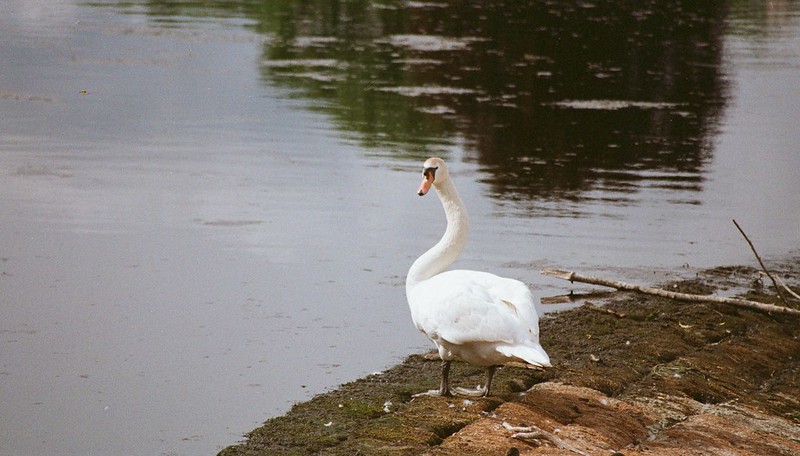
But not well enough to survive the rise of digital. During the first few years of this century, digital compacts went from bulky, lo-res early adopter, expensive cameras to affordable, reliable cameras. APS was doomed and would cease production as a film in 2011. Ironically its name lives on as a digital camera sensor size.

APS in 2020 ?
Worse stocks of film are running out. As I type eBay in the UK just lists 26 items in in APS film category (and one of those isn’t film). All of that film is gonna be expired. And thinking Re-spooling APS canisters ? To my knowledge, it hasn’t been done as there are huge obstacles to this as this APS group flickr thread demonstrates. The good news is most mini labs have the equipment to deal with these films (although not necessarily the know how)
So using any APS camera is on borrowed time.
But at least you can get your shots developed.

Nikon’s APS dabble
Nikon was one of the big backers from the camera manufacturers. They made a host of variable P&S APS cameras under the Nuvis name. But they also went very high end. Along with Canon and Minolta they launched APS SLR cameras.
Enter the Pronea series.
First up in 1996 was the rarer Pronea 6i (aka Pronea 600i). This was the pro/prosumer level version. Funnily enough the pros looked at it and then at their 35mm and went “thanks but no thanks”.

this work is licensed under a Creative Commons Attribution-NonCommercial-NoDerivs 2.0 Generic License.
Now you might think the 6i looks like a modern digital SLR. Turns out it would be one. Kodak used it for their DCS 300 series of digital cameras. Amusingly Kodak didn’t even bother taking off the Nikon Pronea 6i branding.
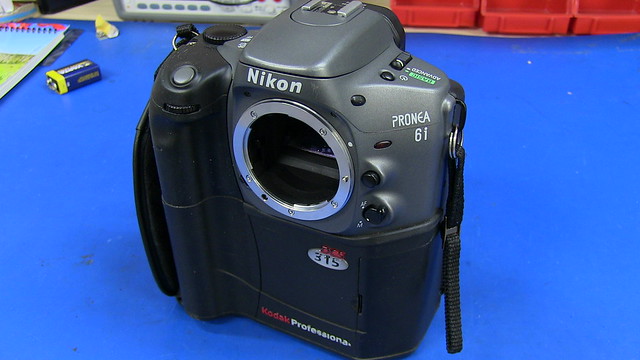
Weirdly this actually means the Pronea 6i has a footnote in camera history. Its digital offspring the DCS 315 was one of the first dSLR with a a LCD screen for image review and to use the jpeg format.
But let’s leave that aside.
But our focus arrived in 1999. This time targeting the amateur end of the market. But this is one of the most revolutionary designs of a SLR I’ve seen.
Pronea S Specifications
At its core we have a F mount Nikon SLR for APS format. Interestingly this was launched the same year as the Nikon F60 (N60) arguably one of the company’s worst cameras. Ken Rockwell describes the lowly F55 as “far superior” to the F60. Turns out the Pronea is as well on paper.

The Pronea S actually offers nearer specs to most mid range full frame cameras of the times. You get a vertical plane electronically controlled shutter capable of speeds between 30 seconds and 1/2000. Metering is phas a 2-21 EV(200 ISO) range in a 6 segment 3D matrix. Both spot and centre weighted metering are options.
AF support for both AF-S and AF-D is built in with AFassist illumination option. AF is by phase contrast TTL and can function between 0-20 EV (200ISO). I’m guessing single point here as there is only one focal point in viewfinder and Nikon don’t specify.

The camera offers Auto, P (program), S (Shutter priority), A( Aperture Priority). 4 dedicated scene modes (portrait, landscape, macro and night) are also available. However there is no custom or manual modes.
The built in TTL flash has a GN 16 (200 ISO, metres with a 24mm lens). It needs to be triggered manually by sliding a switch on the rear although you do get a warning to do so in viewfinder. Sadly there is no hotshoe, so if you want to use a more powerful unit you’ll need to set it up as a slave with the optional slave flash controller. The built in unit has red eye and slow sync options
There is no cable release but an optional remote exists (ML-L1). The viewfinder has diopter adjustment.

Lens support with the Pronea ?
The good news is this can pretty much use any Nikon F mount lens from the AI revision on until the AF-P arrived (usual exceptions like invasive fisheyes apply). Granted you’ll need to shoot any Manual focus AI lenses in S mode without metering but you can still use ’em
I’ll let that sink in
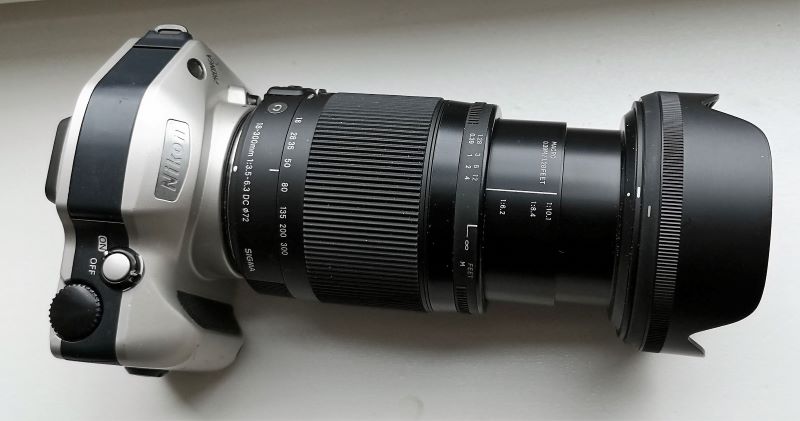
This is a “budget” camera but can use this has better lens support than many more well regarded bodies. Shoot a G lens ? – no worries. DX lens ? – grand. Lock and load my 3rd party AF-S lens ?- fine. Go with my Manual focus glass ? – no meter but no other issues (and you get focus assist). Yes you can use your manual glass here !!
In fact you can also use M42 lenses with a adaptor. You still get that rangefinder which is nice but of course no metering.
And this is on probably the least rated Nikon body ever. Granted VR support isn’t there but neither is it on most Film bodies. As usual there are a small number of lens it doesn’t work with. Mostly these are the usual suspects (medical & PC-Nikkors etc). There is a list in the manual ( on Mike Butkus’s site). Also be aware some AF zooms may have limitations at the wide end. Thankfully MIR has a list of some but I suspect that may not be up to date. Now I was I was able to use my sigma 18-300mm at the wide end with what appeared to be the same focus range as my D7000. But I suspect some other wide zooms may aso have limitations.
Oh and then there’s the IX lenses sold for the Pronea models…..
IX Lenses
Now for the Proneas the IX lenses aren’t a problem. The IX lenses are specifically designed for the cropped frame size. Most proneas on auctions come with one and the others are cheap as chips. That’s not because they are intrinsically bad, They just don’t work really with any other bodies.

Nikon designed the rear element to protrude much more than even DX lenses do. So even if you can mount em which is unlikely due to the rear plastic ring you run a big risk of damaging your internals like the mirror even on a cropped APS-C sensor DX dSLR.
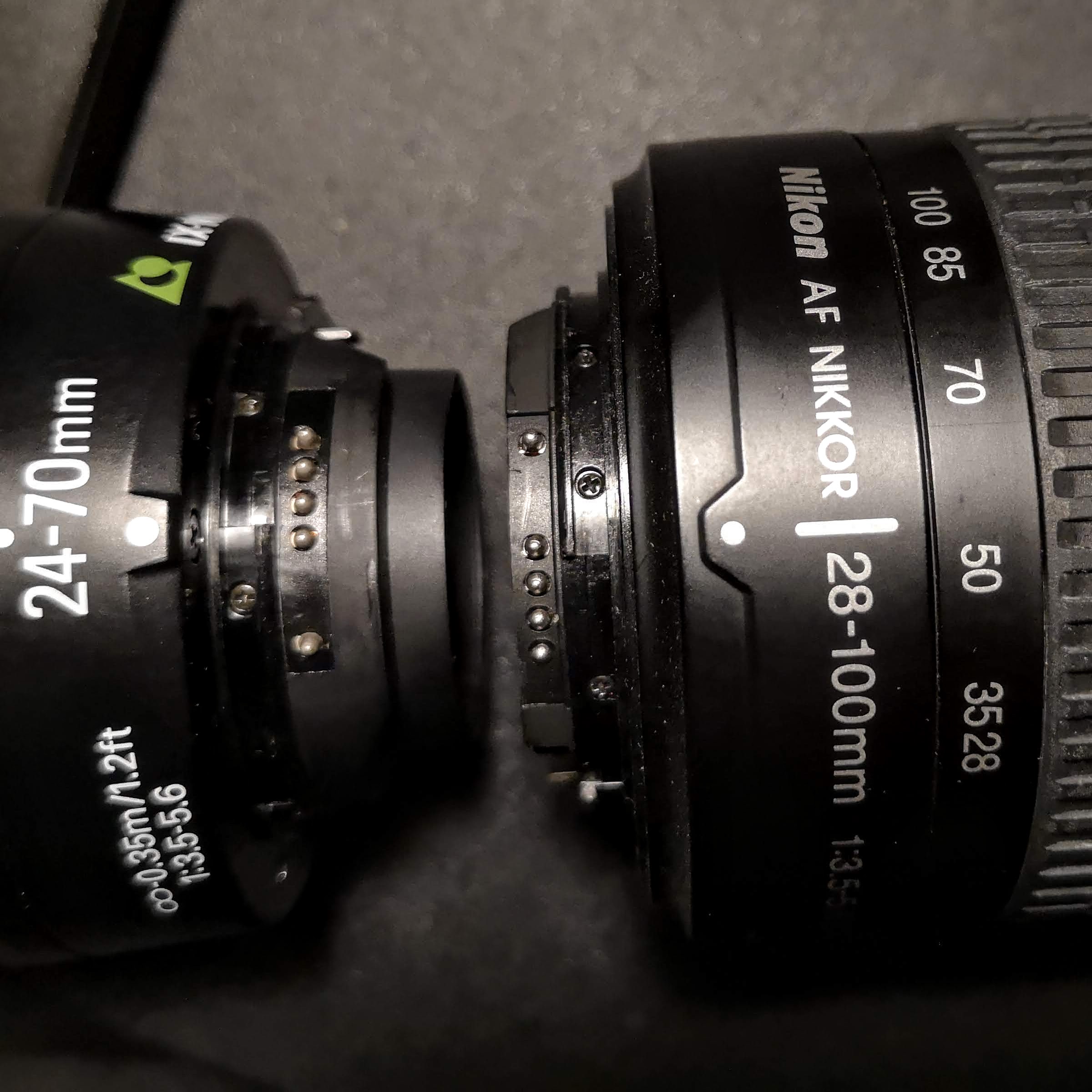
Only 6 IX lenses were ever made all are zooms. The pronea S sold with the silver Thailand made 30-60m 1:4-5.6 kit lens. There are two 60-180mm zooms. One is a black bodied expensive Japanese 11 elements 1:4-5.6. A cheaper silver 10 elements 1:4.5-5.6 made in Thailand replaced it. There’s a black 24-70mm 1:3.5-5.6 (Thailand made) and two 20-60mm 1:3.5-5.6 (silver made in Thailand and black made in Japan). All seem to be AF-D and G class.
Their rear elements require a longer cap than a standard Nikon one. replacements are no longer made. You can find 3d printed solution but much neater is to get a Tarmron adaptall 2 Nikon cap which is also deeper and much easier to source (my thanks to Make Time Move for that nugget and some of the lens data here)

But maybe a glimmer of hope for the Brave ?
Luigi Gallerani noticed that the 30-60mm didn’t protrude that much and could be converted for use on his DX dSLR but that hack doesn’t work on the others. They have some interest in digital land with adaptors for smaller format CSC notably micro 4/3. However that does seem to be adaptor dependant (my F mount G class to micro 4/3 adaptors would not accommodate them). Be wary the lens doesn’t protude back and cause damage – it would be impossible to safely use them with on a Canon EOS even though the adaptor fits
Build and layout
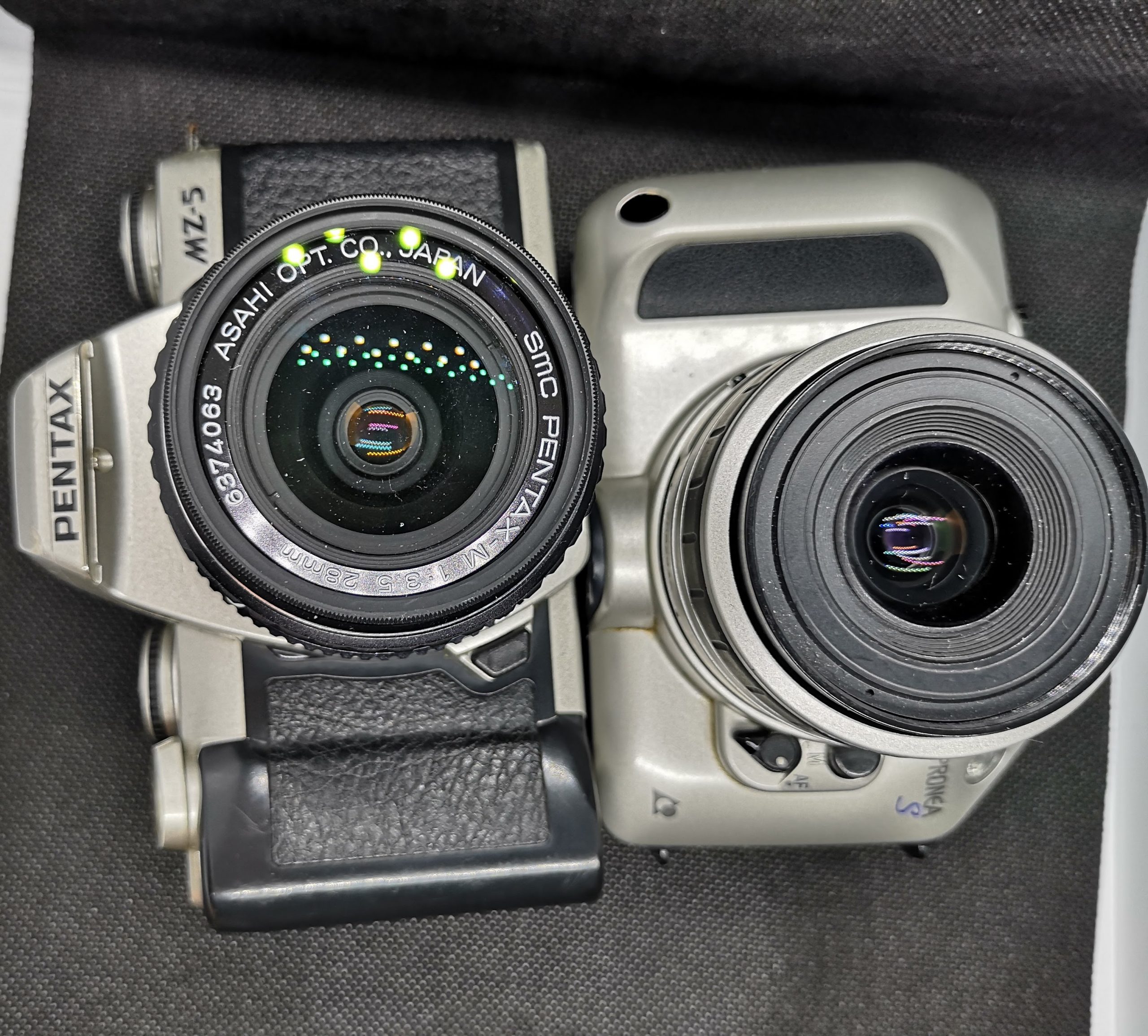
A pretty revolutionary curvy design hides a otherwise conventional innards (bar APS and flash). As you’d expect – tichy but oddly not that much smaller than the Pentax MZ-5. Not surprisingly, it is a plastic body that seems only to come in Silver (the 6i does either that or an off black shade). And of course cost cutting is seen. So the lens mount is plastic not metal and you get a Penta-mirror .

Top plate
On the top plate you have the shutter button surrounded by an on/off toggle switch. To the right you have a command dial to move between settings. Mines is glitchy so doesn’t always scroll through smoothly.
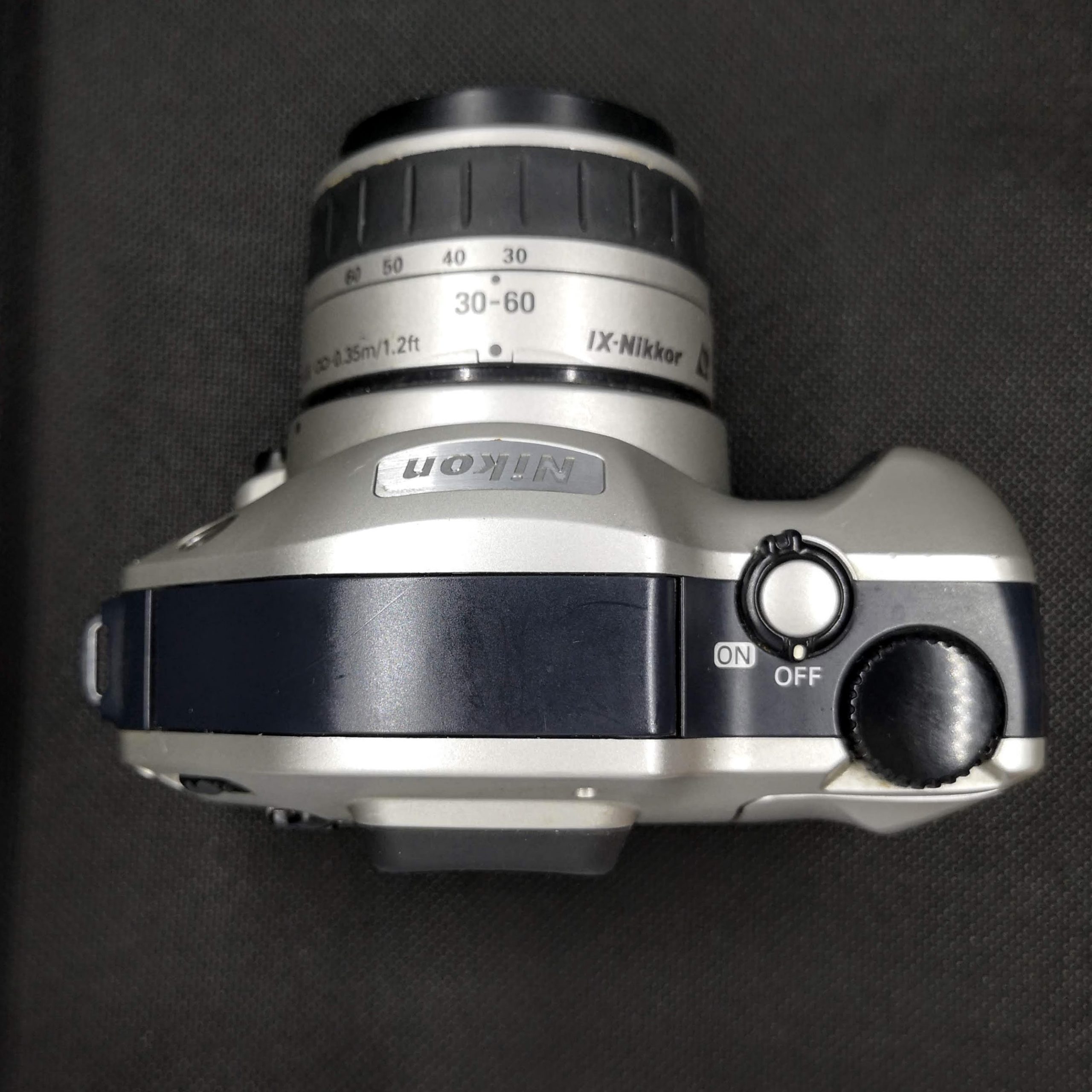
Round the back
The rear has a a mode dial beside a small LCD panel. Flipping down the panel beneath the small LCD reveals a set of options that you can use in conjunction with the top plate selector dial. This allows you to switch metering modes, use the timer options, EV compensation.
This also allows you to have the date/time imprinted on your image.
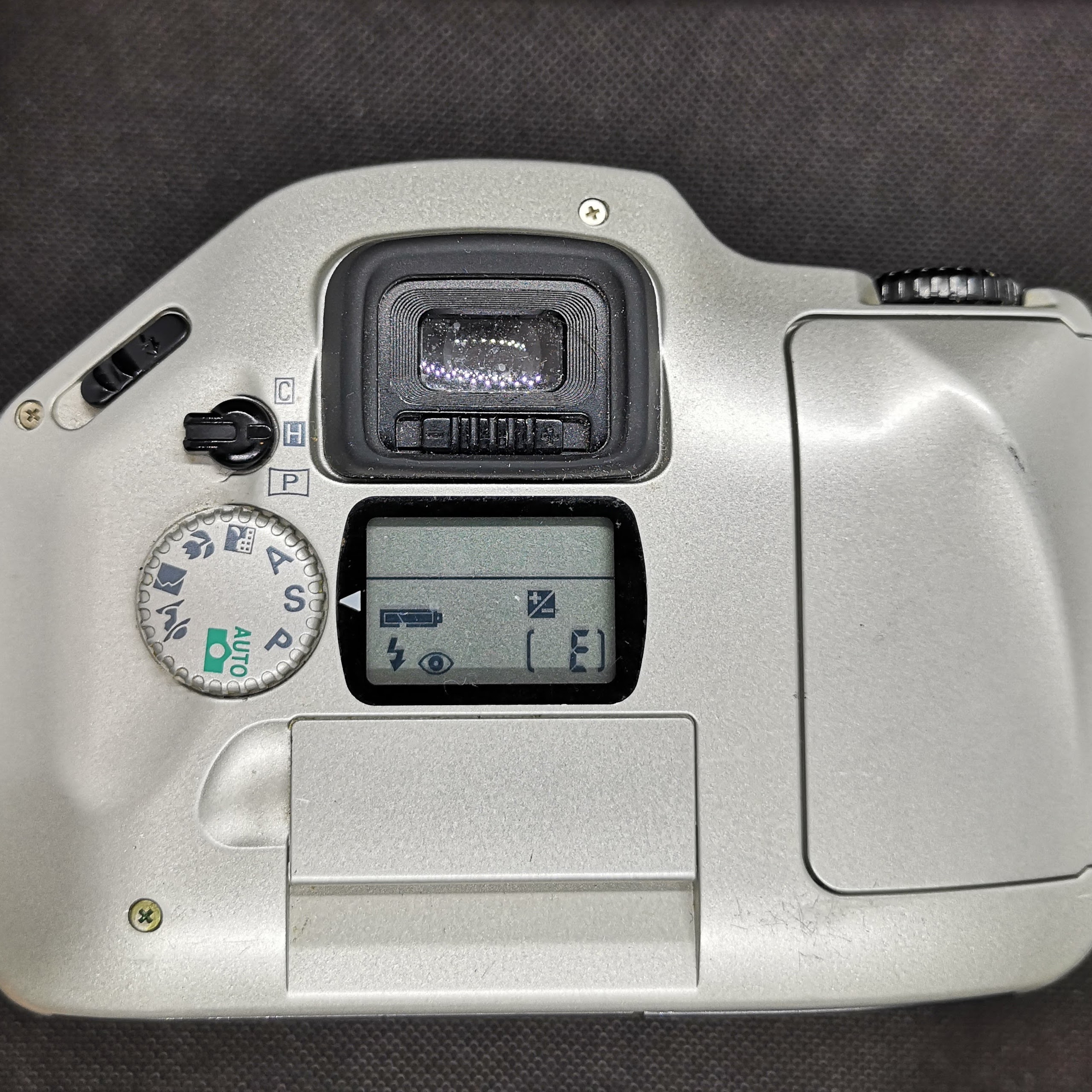
Less useful is the weird caption system. The pronea S lets you add a caption like “Birthday” or “Mother’s Day”. These are in 13 languages (including American and British English (the default)). Thankfully that can be turned off and even if your lab still uses it, gets printed on the back of any prints.
Power is by 2xCR2 lithium batteries. An accessory batterypack (MB-11) exists which allows you to use 4xAA
In use
Weirdly this felt like my G2 but with a better viewfinder. You get an optical viewfinder is small but serviceable and bright. It has a simple clear matt (type IV) AF focus screen but with an illuminated LED readout on the right This shows shutter, aperture, focus peak, if EV compensated (but not setting) and if flash is needed/ready.

Loading is easy- turn a catch to release film compartment and slide film into holder. And the camera does the rest, auto-setting the ISO. Sadly there is no manual override to adjust for the well expired film you load but at least you can use the EV compensation.
In term of focus locking, the camera locked quickly with a range of lenses from the IX-lenses throught to my Sigma DX AF-S. On film test I used just the IX lenses and my Yongnuo YN 50mm 1:1.8 AF-S. Interestingly the Yongnuo at times was slower to lock on focus. But that’s been my experience on other cameras.
The focus assist works with manual focus Nikkor lens. You’ll need to use the camera in S mode and there is no metering
The camera is small enough to wield one handed depening on the lens attached. The centre of gravity is not great doing this however.

Reliability & Cost
Hmm. Nikon tends to have a reputation for reliability. Yes I’ve seen dead bodies but the dents and the battery corrosion tend to explain what happened. My Pronea had only slight wear and booted up fine. But…
At he end of the first roll the shutter locked and the battery lindicator showed dead. Fine I though and swapped them for new one. But irrespective of that and what lens I tested with I got the same issue intermittently. Usually when the shutter speed was high (not always).
Peggy Marsh (of cameragocamera.com) whom has seen a few APS cameras tells me she’s had a few of these but none have worked. So buyer beware.
My pronea landed for £14 with kit lens and a return option. Usually they sell between £10-5 with lens but only as smart sellers put them on with either a starting price of £10+ or buy it now. Now If you’re lucky you chance across one with a 99p starting price. You may be the only bidder.
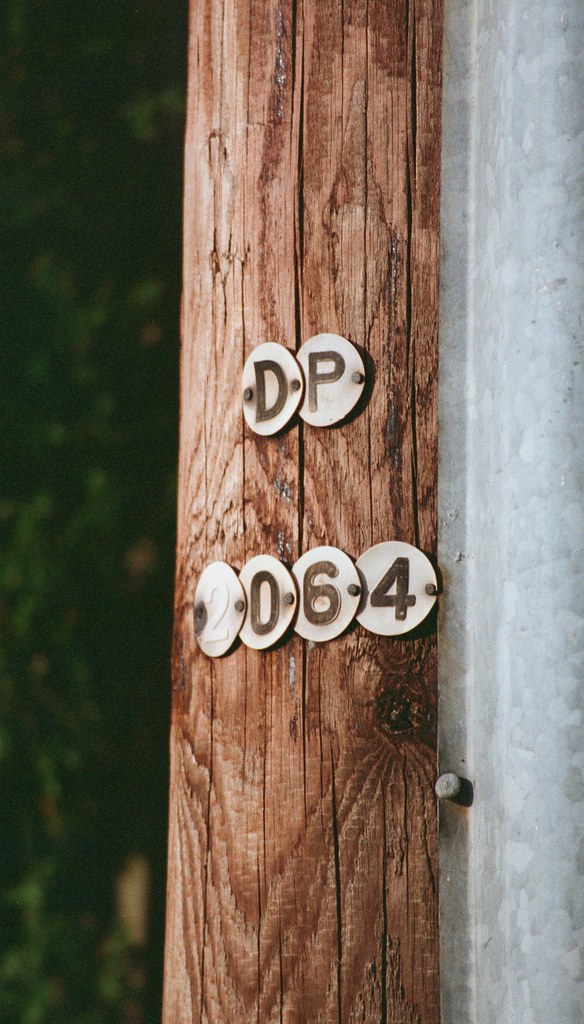
Results
This is quite hard to call. I’m using film that expired 10-20 years ago. You can see that on the Konica XV200 roll which shows noticable colour shifts, But Broadly the metering seems okay. And only the shots where the camera locked being notably underexposed.
Focus accuracy was good.
And the lenses ?
Now usually Optical quality is not usually a point of my SLR review. But I’ll deviate here for once to discuss the IX lenses on test. Firstly it’s worth noting I had no way of testing the 3 IX lenses I used off this camera which adds a lot of variables. So I’m not going into a lot of optical stuff.
Howeve they gave a good account of themselves. For a relatively meaningless comparison I also used the Yonguo YN50mm 1.8N . This is the cheapest new AF-S lens you can buy for Nikon F mount and whilst it didn’t match the 2 older 50mm Nikon Primes I tested it wasn’t far behind
Unsurprisingly it did out perform the kit 30-60mm IX-Nikkor. But the 2 other lens – the 11 element 60-180mm and the 24-70mm were just as good if not occasionally better. The 60-180mm was probably the best but this was a single roll a lens on test.

Final Thoughts
Unless you are either a Nikon Collector or like experimenting don’t buy this camera. Not unless you’re happy to spend the next 10 years or scrambling for crappy expired small frame film. After that runs out you’ll have an odd paperwight to explain to your kids.
And that’s if the bloody thing works.
However it is quite competent when it works and has an incredible lens support. If APS was available this would certainly give high end 35mm compacts a run for their money with much better flexibility.
For alternatives, its rival the Canon IX 7 (aka IX Lite) is a better camera and with no lens nonsense. The same cannot be said about Minolta’s Vectis-S SLR which use a mount completely incompatible with their 35mm cameras. Talk about going all in.
But honestly for the same money you’ll spend on these you can buy as cheap if not cheaper 35mm bodies like the MZ-5 or the Nikon F75 or Canon 3000V. The latter 2 were made a decade after the APS boom and will still have available film in a decade even if Kodak and Fujifilm implode tomorrow,
But….. (and I’m going very A Team ish here). If you’re a Nikon shooter, who wants to dabble in APS, can’t get a working 6i and can later dispose of the IX lenses. Then maybe just maybe, this might be for you.
Other sources
Manual as mentioned is on Mike Butkus’ site. In addition Nikon still maintain a product page but MIR has more technical info including lenses with limitations. Ken Rockwell does a good review (basically he hates APS but sees the postives beyond this).Randomphoto review the Pronea 6i .
Motion film website Make Time Move has an exhaustive guide to the lenses and mentioned has the cunning solution of using Adaptall lens caps. they mention some adaptors for digitals and how to use the lenses for motion picture effects

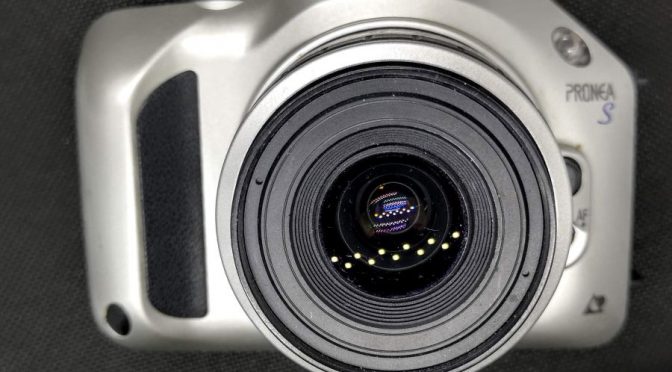
In the aps Facebook group I am in, someone has managed to respool 35mm to aps. There was also talk of a company reproducing the format, but that disappeared and hasn’t been hear of since.
Ta Peggy good to know. I couldn’t find this on anywhere but on the Flickr group at least the theory of doing it was there
hmm, there is actually lot of APS film around for very cheap and also there are many bodies that can be had for a few pennies , alas the development is quite costly compared to 35mm or 120mm ; i heard some people develop it somehow at home, but i am not sure if it takes some special treatment.
The shops i know probably not have the machines anymore for developing APS film.
So alas, i skip on the APS trail, it looked interesting.
Hi Davin.
Most of the minilab equipment equipment out there is APS ready, it honestly is down to the labs staff ability and willingness to deal with it. NT Photoworks whom https://ntphotoworks.com/ did these for me charge the same for APS as they do for 35mm as does the lab in Carlisle I sometimes use as walk in. Big online companies here in the UK like Max Spielmann also charge the same. Some pro labs charge more on the basis it isn’t part of their schedule work usually by insisting you get prints.
As to film availability sadly there is less of this around (if you know of someone with a stash let me know !). As I said in the article if you look on ebay.co.uk via the category system (so selecting photography *& cameras, then Film photography then film ) if you select just APS you do get 25 active auctions. That’s verses over 1700 for negative 35mm film (slide is counted seperately). Granted you’ll find a few rolls not in that category if you do just a search but not that many more
Hi Alan,
I will recheck my favorite lab here in NL, and will let you know, the price, but i guess you are right if it’s one machine then yes, it will develop the APS cartridge as well.
For the reference to APS film, yes you are right via the regular channels, they are not easily found i.e. via Ebay or craiglist sites.
But here you go.. i found a good place here in NL that still stocks a lot of APS film, I just happen to bump into their availability of APS film on their site; I actually bought twice their 50/50 pack deals of 35mm Fuji Superia 200, ( it doubled in price though in 3 years)
https://www.fototuerlings.nl/analoog-vintage/old-stock-films
(sorry only in Dutch)
You could try buying in bulk, if you want a lower price per pack ;P , not sure if still cost effective with shipping to UK though.
Quite love APS – If only the fools had pursued it as a means of evolving 135 film rather than introducing a whole new (smaller) sized format, we’d all be shooting APS 35mm now.
Anyway – some of the Canon APS IXUS’s are the cutest and most competent out there; The high-end Fuji’s are beautiful to look at (eg RVX, Tiara), a gadget lover’s dream (eg 3500ix), and still can produce half decent shots (I Always shoot flash on, and try to pick low ISO film).
Even better is the Canon Eos IX – Beautifully built, a beautiful handler, takes EF lenses – Honestly, you wish All their film dslrs looked and handled like this. I’ve shoved a 50mm on it and it’s taken some of my All-time favourtie shots, yes grain and any colour shifting n’ all.
Two tips – Buy low ISO (800 is too borderline unworkable nowadays), and try to stick to Kodak or Fuji – They seem to suffer the least colour-shifting. Oh, Kodak B&W is, like, the holy grail.
And don’t get prints – Run jpegs through some PS or similar program when you get them back to tweak exposure, (that’ll be the unpredictable expired film, then), print the keepers out at home on your selphy or whatever . Film is harder to get nowadays, and prices are creeping up , so enjoy it whilst it lasts!
Lots of good tips Thank you. I’ve not seen much high ISO APS out there but my experience with expired 35mm or 120 is to avoid for excatly the reason you outline. Funnily enough a EOS IX lite has just turned up (came with another bit of kit I was after). Looks very nice.
Nice article, I have both the PRONEA S and the 600i I like them both they take good photo’s, as for film I have about 50 rolls of film I have picked up over the years 30 rolls off it is slide film which I get crossed process at my local camera shop here in Falmouth. So I have film to keep me going for a while. I have lots of other aps cameras to keep me interested
That’s a good stash. I’d freeze the film if you haven’t done so. i wish I’d been on the ball 4-5 years ago when you could get the stuff for peanuts. I’d actually set out for the 600i/6i and got one except the shutter button was totally knackered
An interesting overview, Alan.
I never used this system format, but when film camera prices reached their nadir some years ago, I did acquire three range-topping models for my collection – a Canon Eos IX, Minolta S-1, and the Nikon 6i/600i – and all three have an interesting take on camera design with the Minolta breaking the usual slr shape mould with its control layout on the back panel.
My favourite is the Canon Eos IX, a beautifully crafted body and fun just to play with using one of my Eos lenses attached. This is mint and because of this I particularly remember I paid just £4.75 for it. If modern colour film emuslions were ever to become available in APS format, I’d happily bring the little Canon in tow with my digital cameras in lieu of my “better” 35mm Leica RF and SLR cameras, simply because it has that “fun” factor missing from the others.
And I’m sure the Minolta Vectis S-1 would also be brought into service as I have 6 of the 7 lenses made for the system. These came courtesy of the first RD3000 I acquired a while back.
The IQ of the images here do seem to be sub-par, even allowing for the smaller negative area. What is interesting, and I hope you can answer this for me, is that in your review of the Goko UF, which I managed to pick up the other day for a fiver, by the way, a couple of the images taken by it are outstanding. I refer to the shot of the orange flat-bed truck and the Ford car. Opening these up in a new tab and then using the + magnifier reveals images so sharp as to defy belief, the orange truck being particularly impressive. Is it out of date film, mediocre lens, low res scan, compressed images for bandwith, or a combination of all four?
Hi Terry,
I assume you’re meaning the lo quality on the Pronea shots ? Probably at least 3 of the 4. the orginal shots uploaded to flickr can be found here mainly with a few additions https://www.flickr.com/photos/80502877@N08/albums/72157715785737178 . Word press has changed the way you add images so I’m using a lower res ~800 wide image from them which is then compressed by WP to fit. In terms of lenses I think at least in rangefinder they’re okay I included the Yongnuo YN50mm 1.8N as a full frame lens as it fitted the camera well aesthetically when out (crap reason but hey!). It is below the standard of similar Nikon primes but isn’t bad. I’ve shot quite a bit with it and there is a comparison full frame review with shots of it on a 35mm here https://austerityphoto.co.uk/a-budget-threesome-getting-a-cheap-prime-50mm-for-your-nikon/
I’m happy enough with the lab results but NT Photo are not my usual darkroom.
The Goko UF is a weird Miracle – Can be incredible sharp with EV 13-15 conditions and 200 ISO film. I’ve got something in the pipeline coming about it again and I’ve just finished shooting a Goko UF-2 which seems to be the same but with ISO adjustable aperture
Hi, Alan. Thanks for your reply.
Yes, I was referring to the Pronea images. I see now that the compression has resulted in file sizes from 80kbs to around 120kbs. The digital images of around 2000pixels on the long side come out as expected. The flickr images do look better.
I’m looking forward to your up-coming Goko UF-2 review. If other things are equal then it will be interesting to see what impact having a variable aperture will make other than being able to get to a closer correct exposure and greater DoF. Fortunately, your readers can still see the original Goko’s IQ in all its glory, so let’s hope your new images will do justice in a side by side shootout.
Keep up the good work.
Alan,
My Goko UF arrived a short while ago, and whilst rather musty smelling, it is fully operational, including the electronic flash.
However, it differs from yours in that whilst it has Goko UF on the camera’s faceplate, mine has two film settings situated below the lens, one for 100 ISO, the second marked 200/400. I discovered that this adjusts the aperture only. Checking online the camera seems to be an unmarked UF-0, but all the Goko UF-0’s have this on the camera’s faceplate. Interesting.
Thank you so much for your well researched article. I was given a working example of this camera with a 30-60mm lens along with a 60-180 but haven’t used as I couldn’t home develop the films. However I’ve recently found a possible solution that involves attaching the aps film to a 35mm film which can then be put on a developing reel.
Your article has rekindled my desire to try this camera. Many thanks.
Andrew